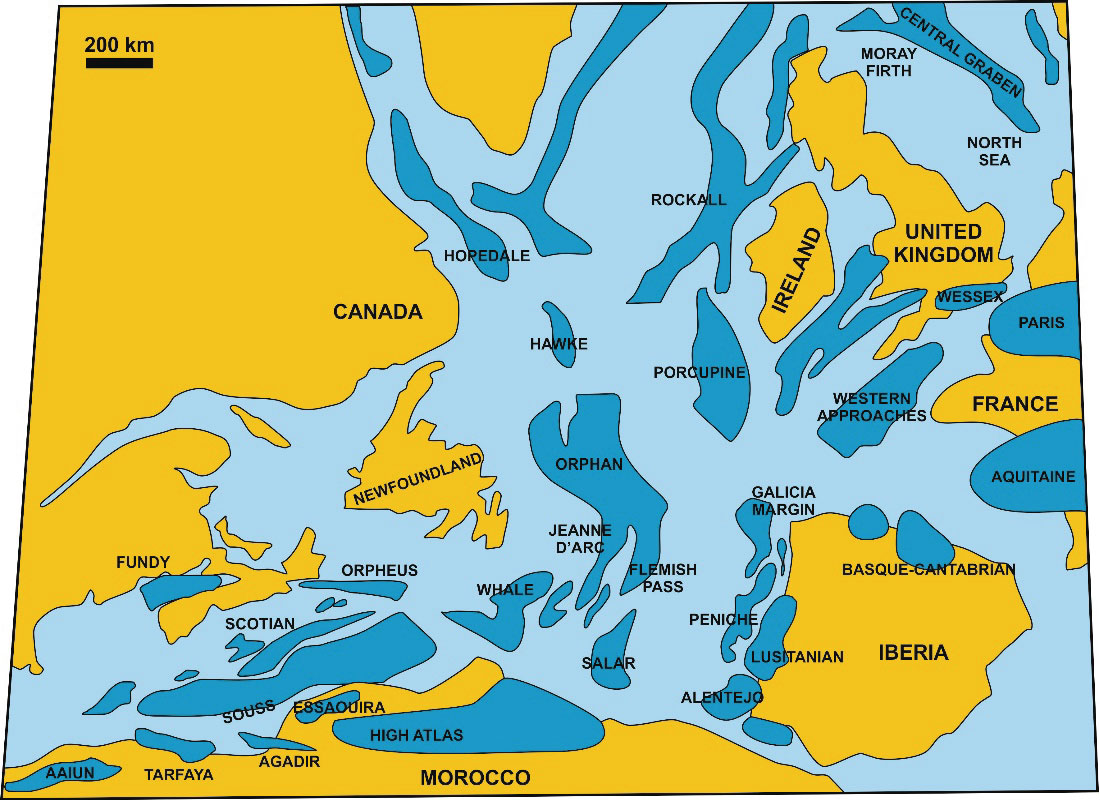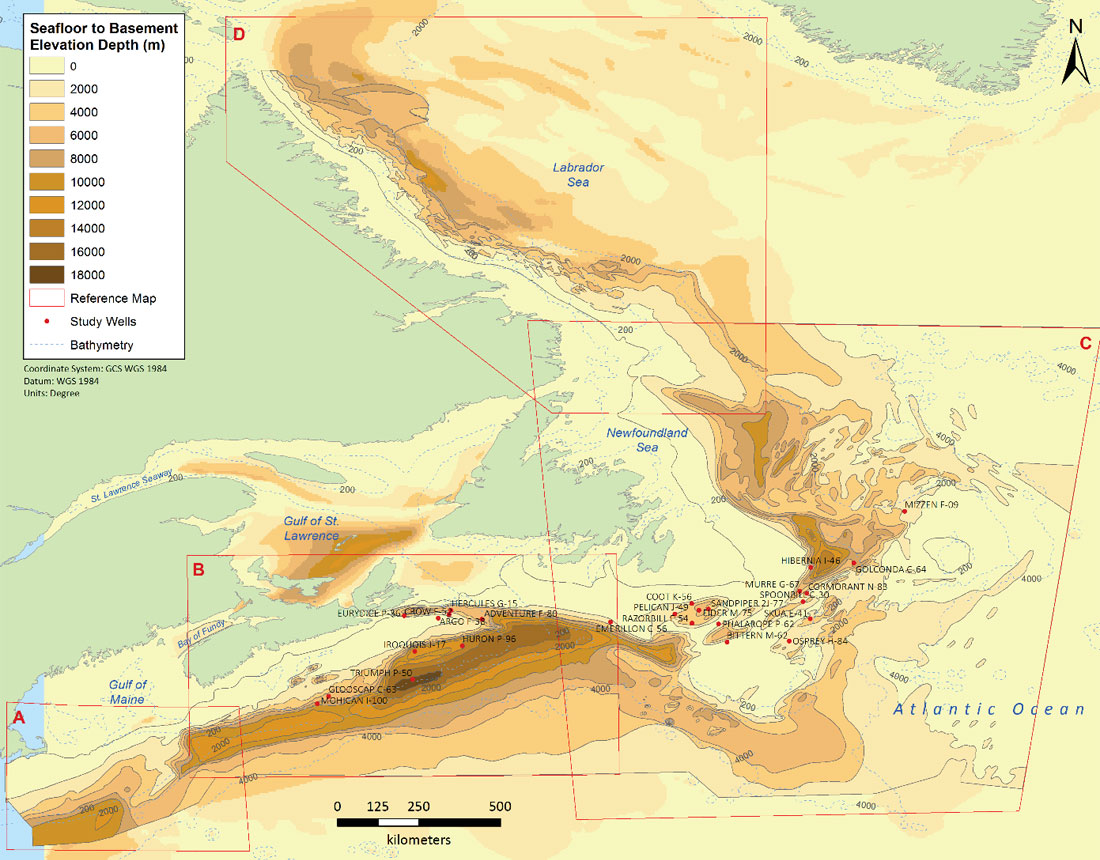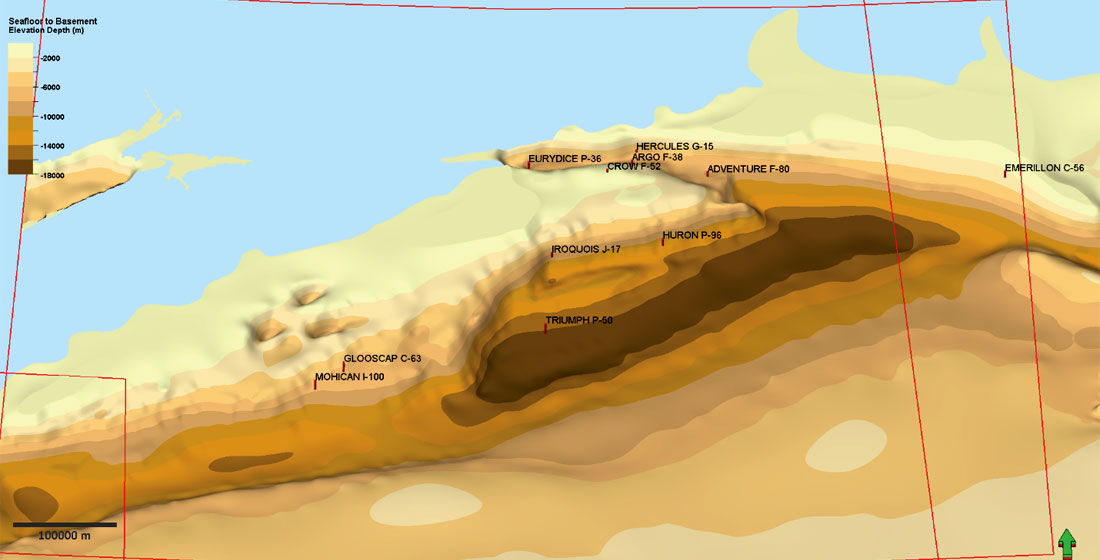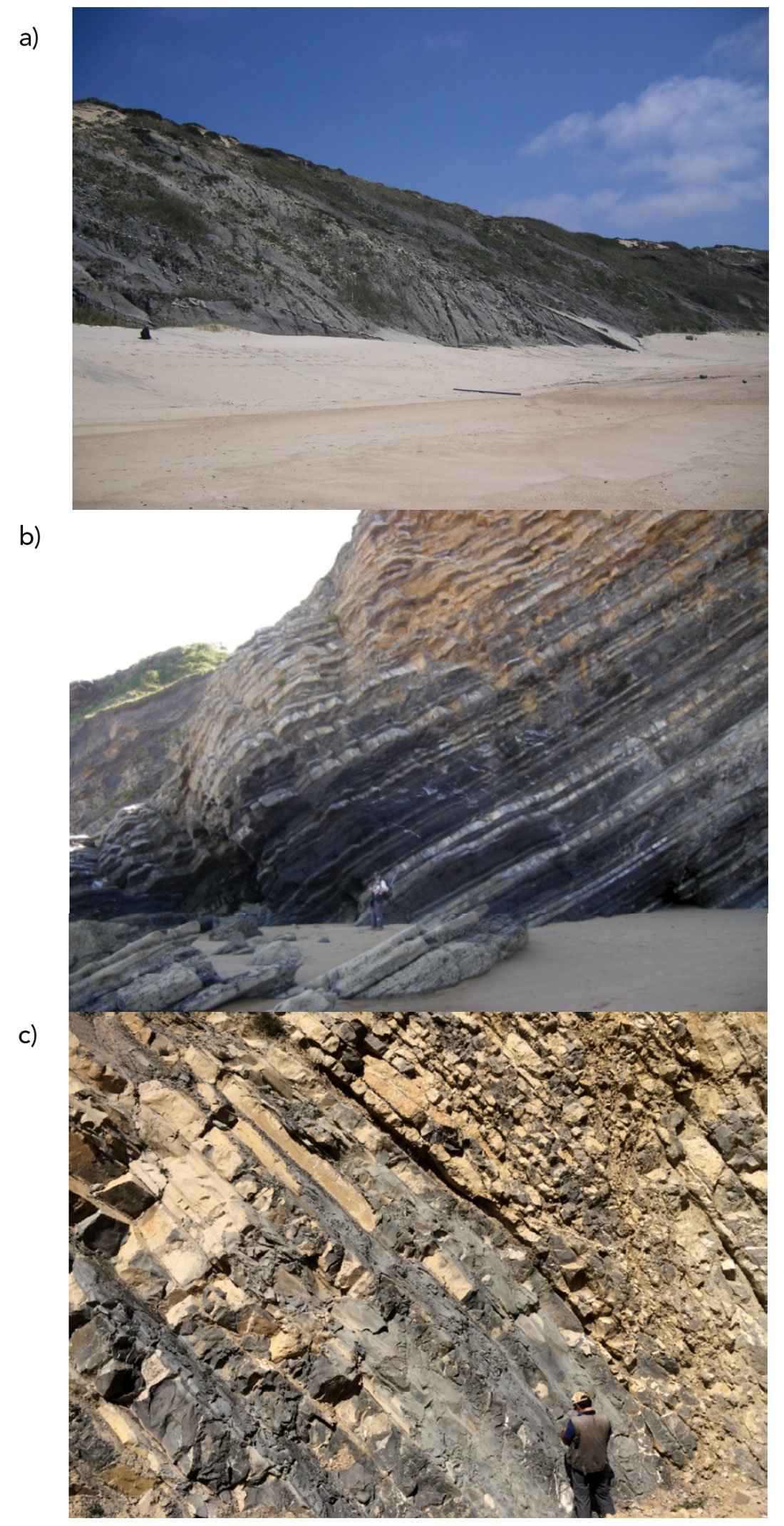Recently, the term petroleum source rock became a buzz word in the geological vocabulary. This is due, in great part, to the development of unconventional gas plays in several locations around North America and Europe. Source rocks are central in hydrocarbon research because they are an essential element of any petroleum system and, most often, a key risk when exploring new frontier areas. However, regardless of their importance in the overall development of an effective and viable petroleum system, these elements are often understudied regarding reservoirs or seals.
Source rocks are simplistically defined as organic-rich sediments that can originate in various sedimentary environments and are one of the essential elements of a petroleum system (sensu Magoon and Dow, 1994). The name source rock is applied to any rock unit containing enough organic matter with the proper chemical composition to generate and expel hydrocarbons via biogenic or thermal processes, irrespective of the degree of maturation (Suárez-Ruiz et al., 2012 and references therein, e.g. Tissot and Welte, 1984). In the petroleum industry, a source rock is characterized by: i) amount of organic matter (mainly controlled by the depositional environment); ii) quality and type of organic matter capable of yielding hydrocarbons (mainly controlled by the depositional environment); and iii) maturity of organic matter (depends on burial history) (e.g. Tissot and Welte, 1984). Constructing an accurate model of a given petroleum system has to take into account all the conditioning processes affecting sedimentation, deposition, and diagenesis; success depends upon the information provided by several disciplines related to Sedimentary and Petroleum Geology.
The Case of the Lower Jurassic in the Atlantic Canada Offshore Basins
Source rock is a fundamental component of petroleum systems as is reservoir distribution; both they are the two main risk elements, not only in the Scotian Margin but also in several other locations along the Atlantic Margins (Fig. 1). In Nova Scotia, offshore hydrocarbon exploration began in 1959. Nonetheless, the Scotian Basin remains underexplored given the low number of exploration wells (127 out of 207 total) and their concentration in the central Sable Subbasin (figures 2 and 3). Historically, testing focused on the successful rollover anticlinal plays (gas), yet the source and timing of hydrocarbon generation and migration pathways are not yet fully understood (www.cnsopb.ns.ca).

The Scotian Basin is located offshore Nova Scotia (Fig. 1); larger than the Gulf of Mexico, covering an area of approximately 300,000 km2. Half of the basin lies on the present-day continental shelf under 200m of water, with the remainder on the continental slope in 200 to 4,000 m of water. It is a classic passive conjugate margin, representing over 250 million years of sedimentation (Mesozoic to Cenozoic) (e.g., Wade and MacLean 1990; Kidston et al., 2002, Weston et al., 2012). The Scotian Basin was initiated during the Triassic syn-rift to lower Jurassic post-rift phase on the Atlantic Margin, with terrestrial siliciclastic sediments and evaporites marking this phase. In the Middle Jurassic, the Abenaki carbonate platform developed with an enigmatic succession of platform carbonates juxtaposed with sandstone and shale of the Sable Delta complex (Fig. 4). The majority of the succession is a passive margin basin fill of sandstone and shale sequences deposited in response to relative changes in sea level. In the later Jurassic and Cretaceous the Sable and Laurentian deltas produced transgressive and regressive packages of deltaic, shelf margin and slope deposits (e.g., Wade and MacLean 1990; Kidston et al., 2002).


Precisely identifying source rocks on the Scotian Margin has a significant challenge with a mix of known and suspected intervals (e.g. Barss et al., 1980; Powel, 1985; Bell and Campbell, 1990; Mukhopadhyay and Wade, 1990; Wade and MacLean, 1990; Mukhopadhyay, 2006; Klemme, 1994; Kidston et al., 2002; Nova Scotia Energy Department, 2011) (Fig. 4). The Upper Triassic rift to? syn-rift successions remain unproven but hold potential for Type I kerogens (mainly algal and amorphous kerogen and highly likely to generate oil, e.g. Tissot and Welte, 1984) from lacustrine sources facies. Similarly, there are thick late pre-rift evaporite deposits (Hettangian Argo Formation) that, in addition to creating numerous structural configurations and traps, may cap a hypersaline shallow marine succession (Type II, mixed terrestrial and marine source material that can generate waxy oil, e.g. Tissot and Welte, 1984). A Lower Jurassic (Sinemurian- Pliensbachian-Toarcian) earliest post-rift marine source rock (Type II) is postulated but remains unproven. Potential exists for a Middle Jurassic Verrill Canyon Formation (Callovian) source interval (Type II-III; Type III – woody terrestrial source material that typically generates gas, e.g. Tissot and Welte, 1984) though due to limited data its extent and thickness is unknown. Better known is the Upper Jurassic to Upper Cretaceous Verrill Canyon Formation assumed to be the source of most hydrocarbons encountered to date (gas and condensate). Its main source intervals are in the Tithonian (Type II-III), Valanginian (Type III), and Aptian (Type III) with terrigenous detritus from the Sable Delta providing significant organic content. Note that the source of the high gravity Cohasset-Panuke oils and those of other oil shows and discoveries (e.g. Penobscot field), remain unknown and unproven.
The Play Fairway Analysis (PFA, Nova Scotia Energy Department, 2011) constructed a model, although based on indirect observations (oils and condensates) and data from neighbouring basins (Morocco: e.g. Et-Touhami et al., 2012; Sachse et al., 2012; Portugal: e.g. Oliveira et al., 2006; Duarte et al., 2010; Silva et al., 2011), arguing for a more regional Lower Jurassic source rock that extends beyond the Sable Subbasin and underlies the whole Scotian Margin. In fact, petroleum systems modelling (Temis™) suggests that this probable source rock interval is the only one that reaches maturity in the southwest platform, margin and slope of the Scotian Basin (Nova Scotia Energy Department, 2011). The PFA also called attention to the possible existence of local uppermost Triassic-lowermost Jurassic (Argo salt) source rocks. Based in part on the Play Fairway Analysis (Nova Scotia Energy Department, 2011), the Canada-Nova Scotia Offshore Petroleum Board’s (CNSOPB) 2013 Call for Bids NS13-1 (www.cnsopb.ns.ca) laid out a compelling case about the existence of a Lower Jurassic Source Rock Complex (Sinemurian/Pliensbachian/Toarcian) in the Scotian Basin, offshore Nova Scotia, Canada. This complex consists of restricted to near-normal marine series belonging to the Mohican and Iroquois formations’ distal equivalents, that are expected to have potential for generation of hydrocarbons. So far, petroleum systems models have been limited to the southwest platform, margin and slope of the Scotian Basin (e.g. Nova Scotia Energy Department, 2011) and it is recognised that other regions of the Scotian margin could have had the development of a mature source rock. Additionally, the CNSOPB 2013 Call for Bids NS13-1 opened the concept of existence of an Upper Triassic-Lower Jurassic source rock in other parts of the Canadian continental shelf, namely in the Newfoundland offshore area (figures 1 and 2). These data suggested that there may be an increased potential for new oil and gas discoveries along the western Scotian Margin.
Moving Forward
Nova Scotia is experiencing a resurgent of interest in the petroleum systems of the Scotian Margin. Recently, record bids for deep water exploration blocks were made by Shell Canada Ltd. in 2011 ($970,000,000 for four blocks) and BP Exploration Operating Ltd. in 2012 ($1,049,999,999 for four blocks). In addition, the CNSOPB identified most of the Nova Scotia shelf and the eastern third of the deep water slope in their Call for Bids Forecast Areas for the 2014-2016 period.
Lower Jurassic organic-rich intervals and potential source rocks in eastern coast of Canada
Currently, at Dalhousie University, the Basin and Reservoir Laboratory (BRL) is investigating known, probable, and possible source rocks in the Nova Scotia, Newfoundland, and Labrador shelves, and deep water offshore areas (and comparison with contemporaneous analogues). The research is focused in the Triassic-Jurassic time interval, and is supported by an evaluation and reanalysis of the existing and available organic geochemistry datasets, observation and geochemical study of selected cores and cuttings and integration with time-equivalent source rock outcrops and well data in Canada and associated conjugate margins, namely Morocco, Portugal, Spain, and Ireland (e.g. Silva and Wach, 2014; Wach et al., 2014; Silva and Duarte, 2015; Silva et al., 2014a; 2015a, 2015b).

The extensive Jurassic organic-rich intervals observable on the Western European and African conjugate margins (figures 4 and 5) suggest that exploration for hydrocarbons in Atlantic Canada can test alternative (and new) play concepts, improving chances of success (e.g. Wach et al., 2014). Along the Central-Northern Atlantic Margin, the Lower Jurassic time interval includes several organic-rich intervals with source rock potential (Fig. 4). These are particularly expressive in the European and African margins, where they crop out extensively in several onshore basins. In the Lusitanian Basin (Portugal), the Sinemurian-Pliensbachian is characterized by marine marl-limestone alternations deposited in a carbonate homoclinal ramp environment (Água de Madeiros and Vale das Fontes formations, e.g. Duarte et al., 2010, Silva et al., 2011, 2015a) (Fig. 5a). Other similar organic-rich age equivalents intervals in Iberia are the Camino, Castillo Pedroso (Basque-Cantabrian Basin, e.g. Quesada et al., 1997), and Rodiles (Asturias Basin, e.g. Borrego et al., 1996) (Fig. 5b) formations. Proven Lower Jurassic petroleum source rocks in Morocco occur in the Prerif Basin and Middle Atlas (e.g. Sachse et al., 2012) (Fig. 5c) and some oils in Tarfaya and Essaouira basins are thought to be sourced from Pliensbachian to Toarcian shales (http://www.onhym.com/).

One of the current line of research of the BRL with application to the study of possible Lower Jurassic source rocks in the Atlantic Canada margin is devoted to the study of one of the most enigmatic features of the sedimentary geological record, the so-called Oceanic Anoxic Events (OAE’s) (Schlanger and Jenkyns, 1976). These events, occurring in constrained time intervals, often relate to major palaeobiological and paleoenvironmental changes. Understanding how these worldwide events affected an area is of major relevance for the petroleum industry because they are usually associated with high-quality petroleum source rocks, such as in the case of the Early Toarcian. Nevertheless, the local response (i.e. production and preservation of organic matter) of the depositional systems to these events depends on paleogeography, paleoclimate, and depositional setting. In spite of the increasing research on these issues, it is still unclear which mechanisms are behind the palaeoceanographic changes that occurred at a global scale and, conversely, which factors controlled local palaeoenvironmental conditions.
In a recent paper, Silva and Duarte (2015) suggested that the basin-wide black shale events observed in the early Late Pliensbachian series of the Lusitanian Basin (Portugal), corresponding to widespread mucilage and microbial outbreaks, are contemporaneous of a worldwide organic matter preservation interval and were driven by extreme climate warming coupled with high oceanic productivity and intermittently stratified epeiric seas (Silva et al., 2011; Silva and Duarte, 2015). Regionally, these hot snaps promoted the rapid but short-lived expansion of Tethyan ammonites into Boreal domains or led to decreased benthic diversity. Ensuing cooling during the Margaritatus Chronozone was accompanied by southwards influx of northwards ammonite fauna or radiation of cyst forming dinoflagellates (Silva and Duarte, 2015). Worldwide preservation of organic matter during the Late Pliensbachian may have resulted in decreased atmospheric CO2 levels through geological storage of carbon, triggering and/or amplifying the Spinatum Chronozone icehouse event. This may have contributed to the occurrence of permafrost and/ or methane gas hydrates in locations easily disturbed by the subsequent Early Toarcian warming, or/and volcanic activity driven by crustal unloading due to deglaciation.
Conclusions
Expensive deepwater oil and gas developments ($100’s of millions to $billions) are in place or planned along continental slopes around the world; it is critical to understand these complex deposits to help reduce the risk and expense of these developments. Understanding the geologic processes increases our understanding of the controls on source rock potential and reservoir delivery systems and develops exploration and production models where few exist.
Currently there is a need to predict the presence of source rock along the Scotian Margin and then define the characteristics of those rocks to determine the potential and viability for economic production. The multi-disciplinary research conducted at the BRL improves understanding of the petroleum systems though analyses of the sequence stratigraphy, depositional environments, structure and tectonics, geo-pressure conditions, and the provenance of sediment in basins.

Acknowledgements
Proprieties (on behalf of the Sable Offshore Energy Project) for financial support through the Petroleum Geoscience Research Grant to Dalhousie University (Basin and Reservoir Lab, PI Grant Wach), and the academic [Dalhousie University (Canada), Coimbra University (Portugal), Université Claude Bernard, Lyon 1 (France), Université Moulay Ismail, Meknès (Morocco) and University of Exeter (UK) Universities], industry [BP Canada Energy Group ULC, ExxonMobil, Hess Corp., Husky Energy, Repsol Energy North America Corporation, Shell Canada Limited, Suncor Energy], and governmental [Offshore Energy Research Association of Nova Scotia (OERA) and Petroleum Affairs Division (PAD) and Irish Shelf Petroleum Study Group (ISPSG) Project IS13/16] partners of the Consortium Source Rock and Geochemistry of the Central Atlantic Margins (PI’s Grant Wach and Ricardo L. Silva).










Join the Conversation
Interested in starting, or contributing to a conversation about an article or issue of the RECORDER? Join our CSEG LinkedIn Group.
Share This Article